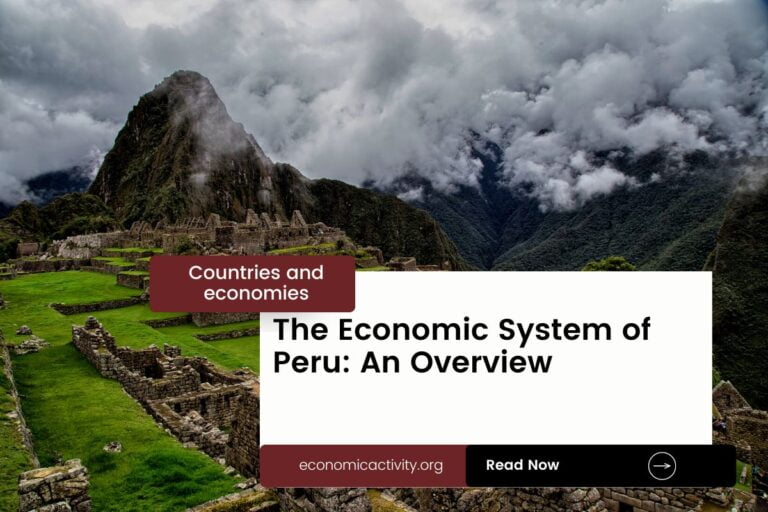Bosnia and Herzegovina, with a population of 3,233,526, is ranked 128th in the world, just behind Mongolia. Located in Southeastern Europe, it covers a total area of 51,210 square kilometers, ranking 121st globally, below Togo.
Bosnia and Herzegovina’s economic position in 2022 reflects a GDP of $24,473,906,673.71, ranking 111th globally. It follows Georgia, with a GDP of $24,780,791,063.71. The GDP per capita for Bosnia and Herzegovina is $7,568.80, placing it at the 87th position worldwide, behind Botswana with a GDP per capita of $7,738.88.
This data showcases Bosnia and Herzegovina’s stable economic standing compared to its global counterparts, with room for growth and development in the coming years.
What are the economic activities of Bosnia and Herzegovina?
- Primary activities: 6.8% of GDP.
- Secondary activities: 28.9% of GDP.
- Tertiary activities: 64.3% of GDP.

Primary Sector of Bosnia and Herzegovina
Bosnia and Herzegovina’s primary sector, particularly agriculture, thrives due to its favorable climate and abundant natural resources. With 44.2% of the country’s land dedicated to agriculture, the sector plays a crucial role in the economy. The main agricultural products include maize, milk, vegetables, potatoes, plums, wheat, apples, barley, chicken, and pears.
Despite contributing 6.8% to the GDP, the diverse range of crops and animal products underscores the sector’s significance. The variety of agricultural products not only sustains the sector but also provides employment opportunities and contributes to the country’s food security and self-sufficiency.
The country’s geological diversity contributes to a rich array of natural resources. Coal, iron ore, antimony, bauxite, copper, lead, zinc, and more play a vital role in the economy, alongside hydropower, timber, and other resources, driving growth and development.
Secondary Sector of Bosnia and Herzegovina
What is the secondary sector or what are secondary activities?
The secondary sector involves industries that transform raw materials into finished products for consumption. In Bosnia and Herzegovina, main industrial products include steel, motor vehicle assembly, textiles, tobacco products, wooden furniture, ammunition, domestic appliances, and oil refining.
Manufactures play a crucial role in Bosnia and Herzegovina’s total exports, accounting for 73.09% in 2023. This highlights the significance of the manufacturing sector in driving the country’s economy and trade growth.
Tertiary sector of Bosnia and Herzegovina
What is the tertiary sector or what are tertiary activities?
The tertiary sector, also known as the service sector, encompasses the ‘soft’ parts of the economy where knowledge and time are offered to enhance productivity and meet needs. It involves intangible goods like attention, advice, and expertise, both for consumers and businesses. In Bosnia and Herzegovina, the main tertiary activities include healthcare and medical care, education and training, banking and finance, tourism and hospitality, transportation and logistics, and security and protection.
Of particular importance, Bosnia and Herzegovina’s tourism industry accounts for a relatively small portion of its economy. With only 1,198,000 annual arrivals and a ratio of 0.3705 tourists per capita, the sector’s contribution to GDP and employment remains modest. This suggests that the country’s economic growth relies more heavily on other sectors, such as manufacturing or agriculture.
Another example of tertiary economic activity is the mobile cellular sector, which boasts approximately 3.8 million subscriptions, equating to 118 per 100 inhabitants. This extensive connectivity fosters technological growth and innovation.
Military Activities and Economic Sectors of Bosnia and Herzegovina
The military is a key example of various economic activities in a country. It involves the primary sector, like resource extraction for military use, and the secondary sector, which includes manufacturing military equipment. The tertiary sector covers the services provided by the military, while the quaternary sector focuses on military research and development. Finally, the quinary sector involves high-level decision-making and strategy in the military.
In Bosnia and Herzegovina, the most recent annual military expenditure is 216.7 million US dollars, which is 0.81% of the country’s GDP. The active military force consists of 10,500 personnel, resulting in about 2.7 active military members per 1,000 capita.
International Trade of Bosnia and Herzegovina
Import Activities of Bosnia and Herzegovina

Bosnia and Herzegovina’s high import activities, accounting for 62% of GDP, are crucial for economic growth and meeting domestic demand.
Bosnia and Herzegovina’s main import activities include refined petroleum, aluminum, garments, coal, and cars. Its key import partners are Croatia (16%), Serbia (13%), Germany (8%), Italy (8%), and China (7%).
Exports Activities of Bosnia and Herzegovina

Bosnia and Herzegovina’s export activities are of high importance, accounting for 48.25% of GDP. Total exports in 2023 were $9.22 billion, indicating a strong reliance on international trade for economic growth.
Bosnia and Herzegovina’s export activities are diversified, with key partners including Croatia, Germany, Serbia, Italy, and Austria. The country exports aluminum, electricity, footwear, garments, and plastic products.
Bosnia and Herzegovina economy challenges in 2024
Bosnia and Herzegovina faces economic challenges in 2024. Its import-heavy economy lacks diversification and private investments. High unemployment persists, worsened by COVID-19’s impact on tourism. Chinese energy investments bring hope but structural issues remain.



Leave a Reply